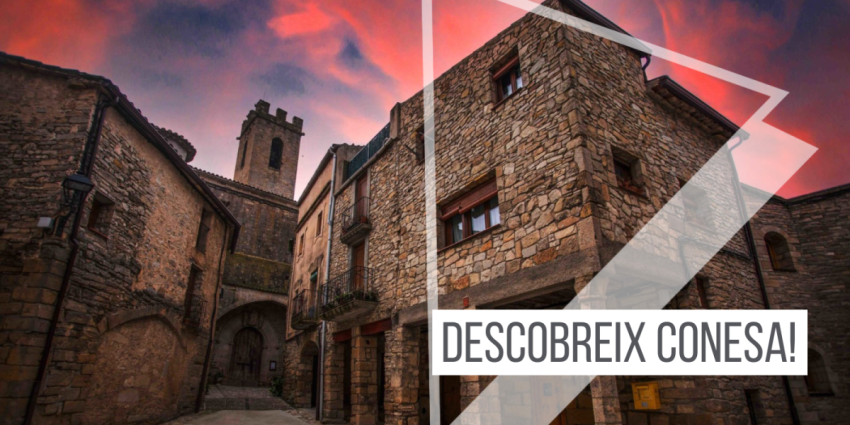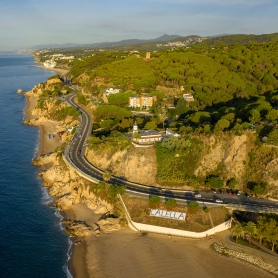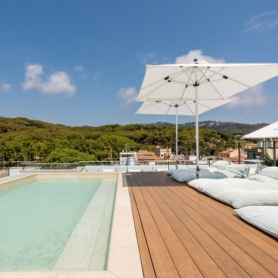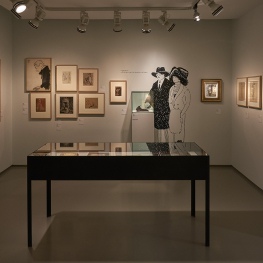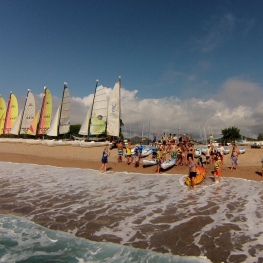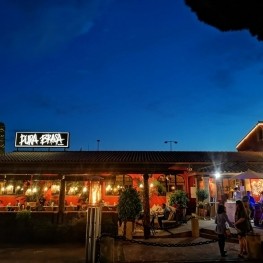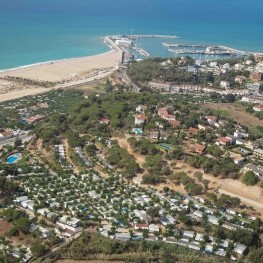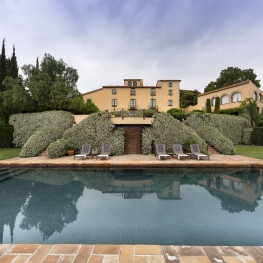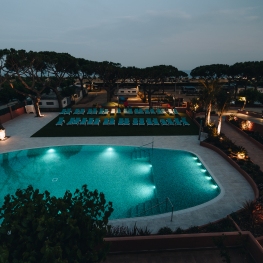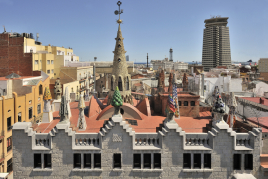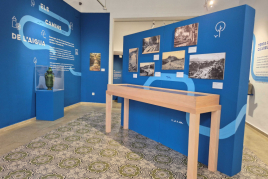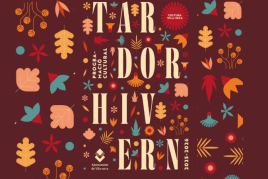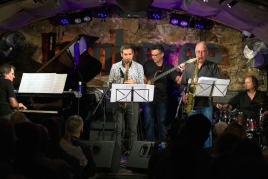A walk through Sinera, Salvador Espriu itinerary
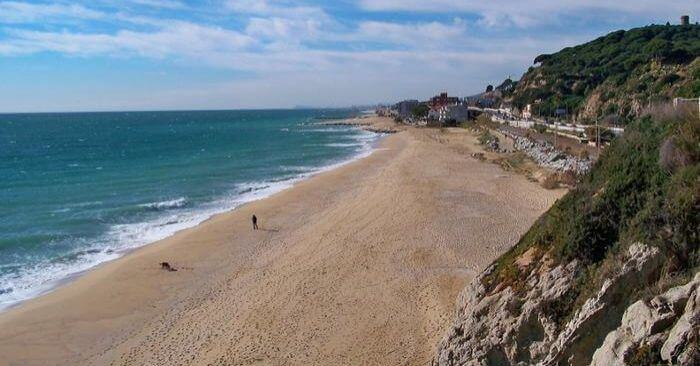
Sinera is one of the great literary myths in the work of Salvador Espriu. Sinera is a symbol of the lost paradise, of the happy world of the writer. And Sinera is also what Salvador Espriu called Arenys de Mar, a town to which he felt very sentimentally linked, since his parents and ancestors were from Arenys. Espriu spent the summer in Arenys during his childhood and youth and was fascinated by the landscape and the glorious past of the city.
There were many and very diverse corners and spaces that inspired the writer, and that we see reflected in his work. We propose a literary walk through the Sinera that Espriu influenced so much so that you can get to know the Catalan poet, playwright and novelist more closely and fall in love with the essence of Sinera just as he did.
The starting point of the itinerary is the Arenys de Mar Town Hall. Continuing along the sidewalk to the right, we arrive at house number 14, the residence of Espriu's maternal uncles: his godmother, María Castelló, and Luis, his uncle, both incorporated to the world sinerenc.
The house of the poet and the garden of the five trees
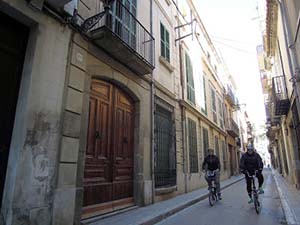 In the current calle Obispo Catalán number 27, formerly known as del Peral, we find the summer residence of the Espriu family. The space is closely linked to the author's moments of happiness, also to the death of close relatives and to destruction, since it was looted during the Civil War.
In the current calle Obispo Catalán number 27, formerly known as del Peral, we find the summer residence of the Espriu family. The space is closely linked to the author's moments of happiness, also to the death of close relatives and to destruction, since it was looted during the Civil War.
The patio of the house stands out, located in the back, with five trees and a laundry room. This space was mythologized by Espriu and appears in his work as the "garden of the five trees", a corner of refuge and peace for the poet. It will become the ancient agora, a place to talk and reflect. Espriu's fiction represents the play Primera Historia de Esther (1948).
Can Draper
At number 16 Calle Obispo Catalán we find the residence of the Draper sisters, intimates of the Espriu family. As a child, Espriu often went to visit them and stayed to eat. In fact, one of the most emotional passages in Esther's First Story is introduced with one of the dishes cooked by the Draper sisters.
La Riera and the Mercè Hall
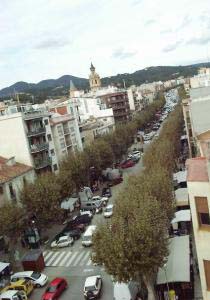 We headed for the Escarabar neighbourhood, with narrow winding streets, a source of inspiration for Laia. On Calle del Cerro you can see the rear wall of the poet's house, and protruding from it, the vegetation of the garden of the five trees. If we allow ourselves to be carried along the Cerro path, we come out to the Riera, the town's urban and life axis. Espriu sings the Riera, both in the happy moments of the festival, as well as in the most tragic, such as floods.
We headed for the Escarabar neighbourhood, with narrow winding streets, a source of inspiration for Laia. On Calle del Cerro you can see the rear wall of the poet's house, and protruding from it, the vegetation of the garden of the five trees. If we allow ourselves to be carried along the Cerro path, we come out to the Riera, the town's urban and life axis. Espriu sings the Riera, both in the happy moments of the festival, as well as in the most tragic, such as floods.
If we follow Riera up the sidewalk on the right, at number 54-56 we find Sala Mercè, a theater and cinema venue founded by Salvador Espriu's father and aunt. The current space wants to resemble what the Sala Mercè used to be and preserves the frame of the building's windows.
Church
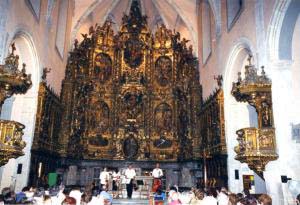 The Plaza de la Iglesia, an old parish cemetery, was occupied by part of the rectory until the Civil War. The church, in Renaissance style and with a Gothic vault, is the space where the funeral rites of the Espriu family and of himself were held. Of the church of Arenys, the main altarpiece stands out, one of the jewels of Catalan Baroque.
The Plaza de la Iglesia, an old parish cemetery, was occupied by part of the rectory until the Civil War. The church, in Renaissance style and with a Gothic vault, is the space where the funeral rites of the Espriu family and of himself were held. Of the church of Arenys, the main altarpiece stands out, one of the jewels of Catalan Baroque.
church street
At number 43 Calle de la Iglesia we find the Museo F. Marès de la Punta, which contains some of the best collections of lace in Europe. The lace industry was very important to the population, and Espriu knew about it. In fact, the image of lace and lacemakers appear on different occasions in his work.
The Five Corners Square
Going through streets and squares, we arrive at the intersection of five streets, called the Five Corners square. Formerly this space was frequented by the performance of blind ballad singers, gypsies with bears and dancing monkeys that have inspired capital Espriu characters, such as the Altísimo to Antigona or Nicolás the bear.
the way to the cemetery
Advancing along the path that leads to the cemetery, we are presented with a spectacular view of the town and the port of Arenys. The Cerro del Mal Tiempo and the Cerro de la Piedad flank the town and are for Espriu the "strict limits of Sinera". In front of the entrance to the cemetery, towards the mountain, we can see the Montalt hills, mentioned in different espriuan passages. To the left, on a hill that touches the sea, stands the Torre de los Encantados, a fortification that served as a watchtower for pirates and foreigners. These, for Espriu, are the broad limits of Sinera, everything that goes beyond it is foreign.
The cemetery
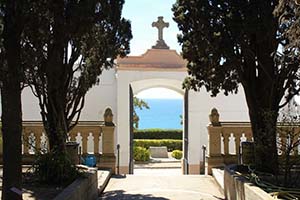 Espriu often walked around the cemetery grounds, attracted by the isolation and silence he found. For the writer, it was a good place to walk and meditate. Espriu was buried in the Arenys cemetery by express wish. His niche number 381 is at the end of the second landing. Together, the deceased parents and brothers of the writer rest.
Espriu often walked around the cemetery grounds, attracted by the isolation and silence he found. For the writer, it was a good place to walk and meditate. Espriu was buried in the Arenys cemetery by express wish. His niche number 381 is at the end of the second landing. Together, the deceased parents and brothers of the writer rest.
The espriuenc landscape
One of the real elements that Espriu faithfully incorporates into his work is the Areñense landscape. Rounded hills, covered with vineyards, carob trees and pine forests that descend towards the sea. Between the hills, a network of small streams, the rials surrounded by cane fields, fennel, are one of the most genuine elements of the local geography and most used in Espriu's literature.
Biography
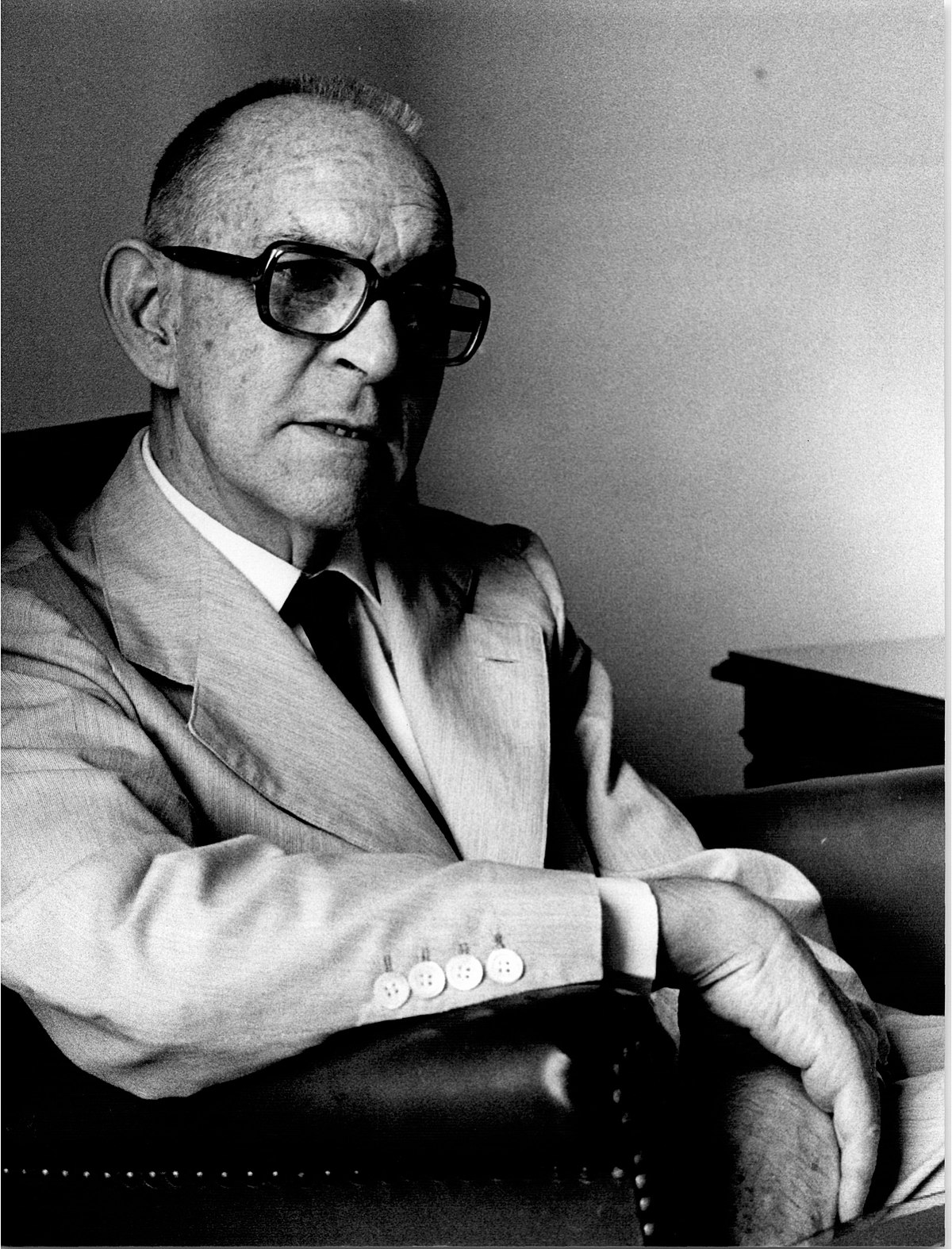 Salvador Espriu (Santa Coloma de Farners, 1913- Barcelona, 1985), the son of a notary and from a wealthy family, manifested himself as a precocious writer at the age of 15. His works Doctor Rip (1931), Laia (1932) and Ariadne in the Grotesque Labyrinth (1935) made him known as one of the great promises of Catalan literature. He graduated in Law and Ancient History at the University of Barcelona, where he began a strong friendship with the poet Bartomeu Rosselló-Pòrcel.
Salvador Espriu (Santa Coloma de Farners, 1913- Barcelona, 1985), the son of a notary and from a wealthy family, manifested himself as a precocious writer at the age of 15. His works Doctor Rip (1931), Laia (1932) and Ariadne in the Grotesque Labyrinth (1935) made him known as one of the great promises of Catalan literature. He graduated in Law and Ancient History at the University of Barcelona, where he began a strong friendship with the poet Bartomeu Rosselló-Pòrcel.
The Civil War hit him deeply and cut short his brilliant university career and as a writer. The post-war period turned him into an office worker who devoted himself to literature in his lost hours. Obsessed with death, with the destiny of man and with the future of the country, he published, among others, the poetry books of Cemetery in Sinera (1946), The walker and the wall (1954), Final of Labyrinth (1955) and the play Esther's First Story (1948).
The tone of social commitment and denunciation of the Franco regime became more evident after the publication of the work La Piel de Toro (1960), which made him the "national poet of Catalonia", at which time his work took special echo. Despite not having been born in Arenys de Mar, Salvador Espriu felt deeply rooted. With the name of Sinera, he turned the town into one of his great literary myths, a symbol of the lost paradise, of the brave new world.
What to do
Neptuno Hotel & SPA
Calella (a 9.9 Km)Tradition and modernity merge with Mediterranean inspiration. We present our completely renovated…
Fundació Palau
Caldes d'Estrac (a 2.2 Km)Discover the life and work of Josep Palau i Fabra, one of…
Base Nàutica Pineda de Mar
Pineda de Mar (a 13.3 Km)Do you want to have a fun time with friends? Do you…
Where to eat
Pura Brasa
Pineda de Mar (a 13.3 Km)A unique gastronomic experience: Pura Brasa is a friendly and fun concept…
Where to sleep
Càmping el Carlitos
Arenys de Mar (a 1.6 Km)Camping El Carlitos in Arenys de Mar is a family campsite close…
Neptuno Hotel & SPA
Calella (a 9.9 Km)Tradition and modernity merge with Mediterranean inspiration. We present our completely renovated…
Can Mora de Dalt
Sant Vicenç de Montalt (a 3.7 Km)15th century farmhouse that has belonged to the same family for 18…
Càmping El Toro Azul
Arenys de Mar (a 1.5 Km)Explore the privileged location of Camping el Toro Azul and worry only…

